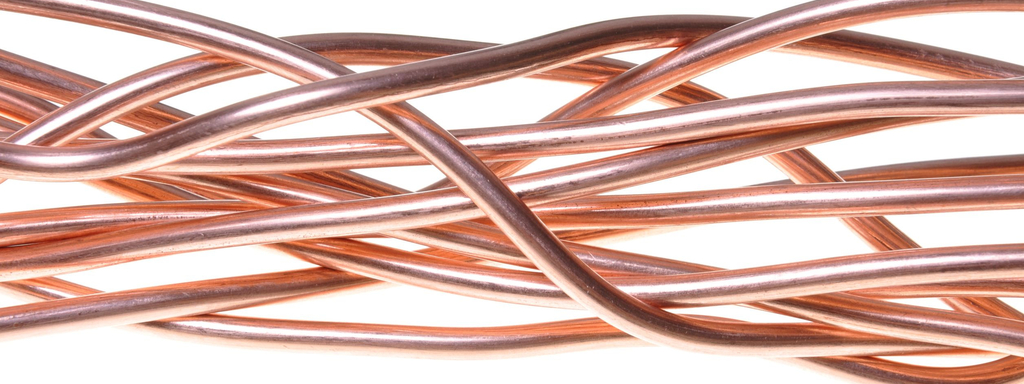
Waarom kan bij een te lage koperstatus het koperniveau in het serum toch nog normaal zijn? De oplossing voor deze paradox ligt in de relatie tussen koper en zink, en de manier waarop koper in het bloed behandeld wordt. Weinig enzymen hebben koper nodig, maar die enzymen vervullen belangrijke functies. De koperbehoefte is nog voorwerp van discussie.
Beste bezoeker, u heeft geen toegang.
Enkel (web)abonnees hebben toegang tot tijdschriftartikelen. Het webabonnement is nog in de maak.
U kunt zich wel alvast (gratis) registreren en tal van andere webartikelen raadplegen!
Auteur
Verschenen in
Referenties
Stipanuk MH, Caudill MA. Biochemical, Physiological, and Molecular Aspects of Human Nutrition. Saunders (2013) 3rd Edition
Bost M, Houdart S et al. Dietary copper and human health: Current evidence and unresolved issues. J Trace Elem Med Biol. 2016 May;35:107-15
Malavolta M, Piacenza F et al. Serum copper to zinc ratio: Relationship with aging and health status. Mech Ageing Dev. 2015 Nov;151:93-100
Gaetke LM, Chow-Johnson HS, Chow CK. Copper: toxicological relevance and mechanisms. Arch Toxicol. 2014 Nov;88(11):1929-38
Piacenza F, Malavolta M et al. Effect of 6-month caloric restriction on Cu bound to ceruloplasmin in adult overweight subjects. J Nutr Biochem. 2015 Aug;26(8):876-82
Jiang B, Liu G, Zheng J et al. Hephaestin and ceruloplasmin facilitate iron metabolism in the mouse kidney. Sci Rep. 2016 Dec 19;6:39470
Morrell A, Tallino S et al. The role of insufficient copper in lipid synthesis and fatty-liver disease. IUBMB Life. 2017 Apr;69(4):263-270
Chambers A, Krewski D et al. An exposure-response curve for copper excess and deficiency. J Toxicol Environ Health B Crit Rev. 2010 Oct;13(7-8):546-78
https://norden.org/en/theme/former-themes/themes-2016/nordic-nutrition-r...
Stern BR, Solioz M et al. Copper and human health: biochemistry, genetics, and strategies for modeling dose-response relationships. J Toxicol Environ Health B Crit Rev. 2007 Apr-May;10(3):157-222
Age-Related Eye Disease Study Research Group. The effect of five-year zinc supplementation on serum zinc, serum cholesterol and hematocrit in persons randomly assigned to treatment group in the age-related eye disease study: AREDS Report No. 7. J Nutr. 2002 Apr;132(4):697-702
Tezvergil-Mutluay A, Carvalho RM, Pashley DH. Hyperzincemia from ingestion of denture adhesives. J Prosthet Dent. 2010 Jun;103(6):380-3
Doherty K, Connor M, Cruickshank R. Zinc-containing denture adhesive: a potential source of excess zinc resulting in copper deficiency myelopathy. Br Dent J. 2011 Jun 10;210(11):523-5
Nations SP, Boyer PJ, Love LA et al. Denture cream: an unusual source of excess zinc, leading to hypocupremia and neurologic disease. Neurology. 2008 Aug 26;71(9):639-43
Gabreyes AA, Abbasi HN et al. Hypocupremia associated cytopenia and myelopathy: a national retrospective review. Eur J Haematol. 2013 Jan;90(1):1-9
Willis MS, Monaghan SA et al. Zinc-induced copper deficiency: a report of three cases initially recognized on bone marrow examination. Am J Clin Pathol. 2005 Jan;123(1):125-31.
Turnlund JR, Keen CL, Smith RG. Copper status and urinary and salivary copper in young men at three levels of dietary copper. Am J Clin Nutr. 1990 Apr;51(4):658-64.
Turnlund JR, Scott KC, Peiffer GL et al. Copper status of young men consuming a low-copper diet. Am J Clin Nutr. 1997 Jan;65(1):72-8
Wacewicz M, Socha K et al. Concentration of selenium, zinc, copper, Cu/Zn ratio, total antioxidant status and C-reactive protein in the serum of patients with psoriasis treated by narrow-band ultraviolet B phototherapy: A case-control study. J Trace Elem Med Biol. 2017 Dec;44:109-114
Lai TY, Kuo HW. Changes in urinary Cu, Zn, and Se levels in cancer patients after treatment with Sha Shen Mai Men Dong Tang. J Tradit Complement Med. 2015 Aug 3;6(2):135-9
Squitti R, Ghidoni R, Simonelli I et al. Copper dyshomeostasis in Wilson disease and Alzheimer's disease as shown by serum and urine copper indicators. J Trace Elem Med Biol. 2018 Jan;45:181-188
Li DD, Zhang W et al. Serum copper, zinc, and iron levels in patients with Alzheimer's disease: a meta-analysis of case-control studies. Front Aging Neurosci. 2017 Sep 15;9:300
Medeiros DM, Milton A et al. Copper supplementation effects on indicators of copper status and serum cholesterol in adult males. Biol Trace Elem Res. 1991 Jul;30(1):19-35
Mendoza M, Caltharp S et al. Low hepatic tissue copper in pediatric nonalcoholic fatty liver disease. J Pediatr Gastroenterol Nutr. 2017 Jul;65(1):89-92
Xu J, Church SJ, Patassini S et al. Evidence for widespread, severe brain copper deficiency in Alzheimer's dementia. Metallomics. 2017 Aug 16;9(8):1106-1119
Xu J, Begley P et al. Elevation of brain glucose and polyol-pathway intermediates with accompanying brain-copper deficiency in patients with Alzheimer's disease: metabolic basis for dementia. Sci Rep. 2016 Jun 9;6:27524
Broman M, Bryland A et al. Trace elements in patients on continuous renal replacement therapy. Acta Anaesthesiol Scand. 2017 Jul;61(6):650-659
Somi MH, Rezaeifar P et al. Effects of low dose zinc supplementation on biochemical markers in non-alcoholic cirrhosis: a randomized clinical trial. Arch Iran Med. 2012 Aug;15(8):472-6
Ben-Hamouda N, Charrière M et al. Massive copper and selenium losses cause life-threatening deficiencies during prolonged continuous renal replacement. Nutrition. 2017 Feb;34:71-75
Hatano R, Ebara M et al. Accumulation of copper in the liver and hepatic injury in chronic hepatitis C. J Gastroenterol Hepatol. 2000 Jul;15(7):786-91
Rodríguez-Moreno F, González-Reimers E et al. Zinc, copper, manganese, and iron in chronic alcoholic liver disease. Alcohol. 1997 Jan-Feb;14(1):39-44





